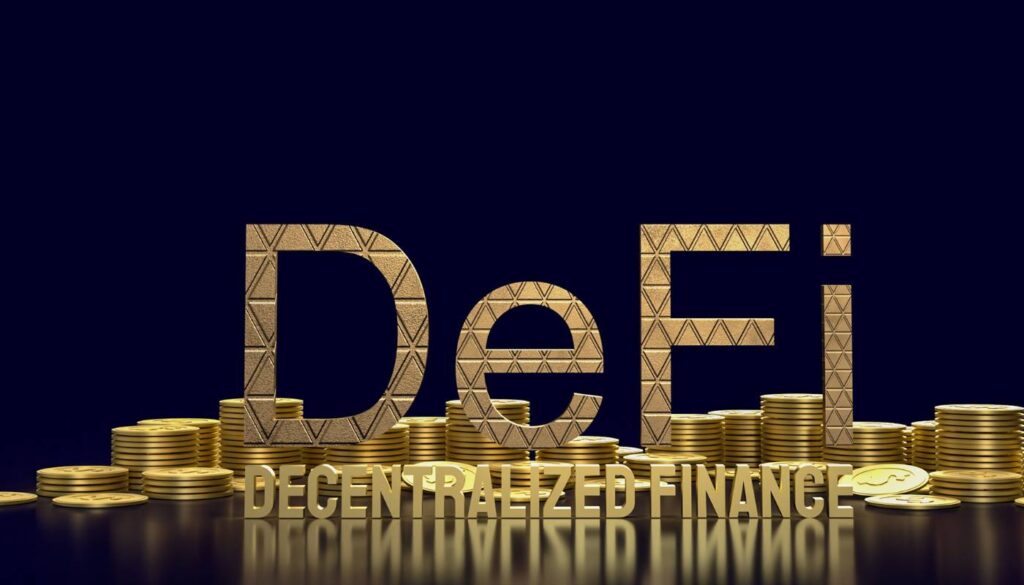Such as banks or broker’s etc but run my the chain of blockchain technology under a decentralized financial system. Basically, the wh le premise of DeFi is that any type of financial product or solution can be constructed on a blockchain platform, accessible to the world, trustless, transparent, and censorship-resistant. Where Blockchain is all about decentralizing money or cryptocurrencies, DeFi is a lot more about decentralizing banks and other financial services.
Understanding DeFi: Decentralized Finance
Decentralized, permissionless, open-source, transparent, censorship-resistant, and scalable are the key characteristics of DeFi systems. The DeFi model offers a lot of potential in terms of allowing such benefits as financial services all over the world, cutting out the middle man, permissionless innovation, freedom from censorship, stronger security and control over the funds, and just all around great potential for financial inclusion.
The building block of DeFi is made of protocol-based, peer-to-peer, and open-source exchange systems that enable self-executing financial operations. These decentralized exchanges enable trustless trading of one or multiple digital assets; peer-to-peer lending/borrowing; Margin trading; and other decentralized financial instruments across different networks without involving third parties like banks and other centralised institutions.
Key Components of DeFi (Decentralized Finance)
Here are some of the key components of decentralized finance (DeFi):Here are some of the key components of decentralized finance (DeFi):
– Decentralized Finance Apps (dApps): These are applications developed on blockchain solutions where you have services such as lending, borrowing, trading, and payments among others without the use of an intermediary. Examples: Uniswap, Aave, Compound.
– Smart Contracts: These are programs that run on blockchains and act like robots that perform DeFi transactions once particular conditions are met. They Make possible non-custodial, peer-to-peer financial services.
– Oracles: These are real-world events and data linked to smart contracts on the blockchain network. They give the capability to smart contracts to work when a particular condition is met.
– Stablecoins: These are cryptocurrencies intended to have as less volatility as possible against fiat currencies. They bring order to the incredibly chaotic crypto market so more trustworthy DeFi services can be created. Examples: USDT, USDC, DAI.
– DeFi Protocols and Platforms: These are open-source, interoperable programs and platforms that enable developers to build financial DApps on blockchains. Examples: Ethereum, Solana, Polygon.
– Decentralized Governance: DeFi projects are relatively decentralized, and the utilization of governance tokens empowers communities to oversee, manage, and decide on relevant protocols and products.
DeFi in essence aims to provide an open, permissionless and transparent financial system that is effectively decentralized, integrated and does not require any intermediaries.
Benefits of DeFi (Decentralized Finance)
One of the most impressive benefits regarding DeFi is in the rise it can provide for the idea of financial inclusion. DeFi removes the limitations that traditional financial middlemen impose, and it enables individuals in rural areas to participate in lending, borrowing, and insurance financial services. All they need is internet connection and a digital wallet.
DeFi protocols operate on open blockchains, where every single transaction, every smart contract operation, is recorded in the open ledgers, for all to see. That creates trust through transparency, as users can personally check the legitimacy of the protocols they’re dealing with, and thus eliminates or at least severely reduces any one single aspect of fraud or manipulation by centralized entities.
Reduced Costs: The old financial systems all have a lot of middle men that just take their share of the transaction. DeFi, as one, eliminates all the middlemen and therefore drastically cuts the cost of transactions. Besides this, smart contracts have been made to do processes a lot faster and more accurately without human mistakes.
Innovation and Adaptability: DeFi is the frontier of financial innovation, where never before seen financial products and services are being created. From flash loans (instant loans without collateral) to real world assets tokenized, DeFi is always evolving and providing new mediums for people to control their finances.
Control and Ownership: Within DeFi, full control of one’s assets rests in his or her hands. Whereas in the case of conventional banks, they take your money and they hold it and manage it for you, DeFi, however, allows the user to retain custody of their assets at all times. Control rings so much in a world where faith in centralized institutions is at such a low level.
Challenges and Risks of DeFi (Decentralized Finance)
Here are some of the major challenges and risks associated with decentralized finance (DeFi):Here are some of the major challenges and risks associated with decentralized finance (DeFi):
– Smart contract risks: DeFi is built on smart contracts. But they are code, and code can have flaws which can be exploited to hack the system and get a hold of the data. This can lead to loss of money for the user. Auditing and testing of smart contracts must be done to a T.
– Price volatility: The value of these cryptoassets as they are applied in DeFi can be highly volatile most of the time. This creates risk for users given that the value of collaterals or assets can fluctuate massively.
– Liquidity risk: The majority of DeFi lending markets involve a concept of overcollateralization and liquidation. However, if the prices of the assets start rising or falling then the liquidity dries up and one cannot easily exit the positions. This introduces risk.
– Regulatory uncertainty: DeFi runs in a decentralized fashion with no middleman. This creates unpredictability on how governance of DeFi applications and platforms will be as they advance. This lack of certainty on the regulatory angle is what makes some users and institutions hold back in their blockchain adoption.
– Platform and coding risks: Most DeFi applications are developed by small teams. Technical risk entails that there is always a possibility of failures, hacks, or even loss of funds due to bugs in the code or weaknesses in how platforms are developed.
– Oracle risks: Price oracles are primarily used in DeFi apps to incorporate outside information into the blockchain. When oracle data is altered or unsteady, it may lead to liquidations or incorrect values utilized in the DeFi systems.
Conclusion
DeFi is the way to go, finance for the people, by the people, and most importantly, accessible to all people. Not that this does not have its hardships, and dangers, but the returns for this are high. In this ever changing world DeFi will defiantly play an integral role in the finance of the future. No matter if it is more financial inclusion, innovation, or personal empowerment, DeFi is going to change the way we think about money and banking.






